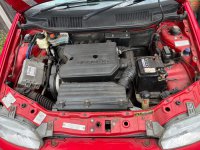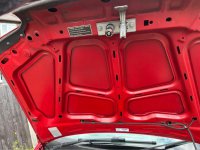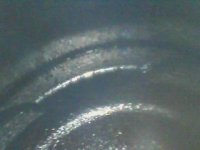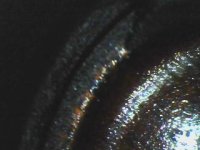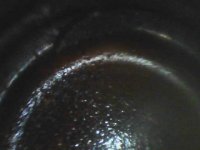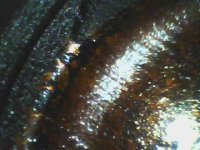Andy messaged me and asked if I'd like to contribute here. I've just read the post through (recent family events have meant I've not been on the forum much - but I'm getting back to normal now)
The first obvious observation is that the guts of the engine looks very dirty with a lot of baked on - so hard and crust - gunge. My immediate thoughts on that is don't use a powerful engine flush. Hard baked deposits are likely to be loosened and find their way into parts of the engine where they won't be welcome - for instance restricted oil ways, relief valves, hydraulic tappets, etc etc. much better to do frequent oil changes for a while with some good runs in the country to get things nice and hot. The deposits are likely to be slowly dissolved by the detergents in the oil and collected in the filter (of course you'll change the filter each time when doing the oil.
There have been so many knowledgeable people - Bugsy, vexorg, s130, yourself Andy, Steven in the north east and Charlie, in fact all the usual people I would have expected to be attracted to a thread like this - that I think they've covered pretty much all the bases. However I'll have a go just in case something I say appeals?
The fact that the "foreigner" has departed gets rid of one problem. Strange it wasn't magnetic wasn't it. The obvious thought would be that it was part of a top ring land from the piston - which would be aluminium so not magnetic - but your images don't support that and you say you can't see any damage.
The top of the pistons are pretty dirty with carbon aren't they, which might indicate a lot of short trip useage? This coupled with infrequent oil changes would seem to be be supported by the general dirty state of the inside of the cam cover.
You refer to the top of the pistons having "surface rust"? Andy, I know you're deeply into all things to do with cars so I'm not trying to insult you by reminding all here that aluminium - from which most pistons are made - doesn't rust and aluminium oxidation looks white anyway. No, I believe the yellowish look - if that's what you're thinking - is due to oil varnishes and combustion deposits (the piston crowns look very "wet" anyway but that might be due to your "wet" compression test) I think the face of that piston looks a little "rough" but that's probably been due to the wee "foreigner" rattling around?
As, I think Bugsy commented? I think the compression figures look reasonable for an older engine. By the way, his advice on wet testing is good. Namely, squirt some oil in, let it dribble around for a couple of minutes and then, most importantly, place a rag over the plug'ole and spin the engine briefly on the starter before screwing the tester hose in. If you don't do this you may get oil into the tester hose and, in extreme cases where far too much oil has been introduced, you may ruin the gauge with too much compression or even hydraulic the engine.
Which leaves us with the puzzle of the varying compressions obtained on separate tests on that No2 cylinder. A sticking valve or hydraulic lifter/tappet (whatever you like to call them?) - if it has hydraulic tappets - would be a good guess. The test you're doing is a compression test so, by it's very nature, is a dynamic test - You did check each time to see the throttle butterfly was open and there were no other obstructions to the incoming air? Variation in outcome might well be due to the butterfly being open on one test but closed on another? A valve not fully closing every time might be equally likely. Personally I think a cylinder leak test might be useful as it's a test done statically so if a valve is just slow to close due to a "gummy" deposit or tightness in a guide, it will be likely to close onto it's seat when left alone under the influence of the spring. Of course you need a source of compressed air and a leakdown tool to do this. I'm fortunate enough to have my own compressor and am able to borrow the tool from a friend. Quite a few years ago, when I was living and breathing cars almost 24 hours a day and risking divorce over it (Hillman Imps had an obsessive hold over me) I found I was needing the leakdown tool quite frequently and became embarrassed asking to borrow it all the time (Imps are famous for head gasket problems) so I made an adaptor from an old plug so I could inject compressed air into a cylinder:
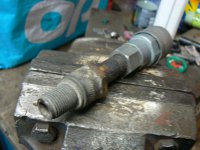
So with piston at TDC on the compression stroke (so both valves closed) you screw in the adaptor and connect the air line. But keep your fingers out of the way because if you aren't exactly at TDC the crank will turn. However, if you've got it right you can now stick a listening tube down the inlet, up the exhaust and into the oil filler. You really should hear no hissing from either the exhaust or inlet if the valves are sealing. You'll always hear hissing at the oil filler hole because no piston/ring seals perfectly. With experience you learn when the hiss is acceptable or excessive but probably better to check for piston blowby with the leakdown tool if you've not "got the ear". If you get a good result from the cylinder leak test but still get variable outcomes from the compression test then likely you've got a sticking valve/tappet.
Can't think of anything else right now but I'll come back on here if I do and keep following this thread anyway.
Good luck Andy, I think you're talking about taking the sump off? might be a good idea to have a look at the bottom end before deciding whether to take the head off - I'm thinking blocked up oil strainer, maybe little glittery bits in the oil and other possible "nasties". If the bottom end is ok and there's no obvious signs of head gasket problems I could be tempted to run it for a wee while, maybe a month or so, getting it well up to temperature each time and do a couple of oil changes. Then, if it's still not "happy" think some more about stripping the top end?












